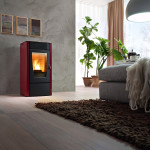BEGINNERS GUIDE TO RENEWABLE ENERGY
BEGINNERS GUIDE TO RENEWABLE ENERGY
By RICHARD HIBLEN
When searching for renewable energy solutions the level of information is limited at best, highly confusing at worst. Hydro, wind, heat pumps, solar thermal, biomass and of course Solar PV panels play the lead roles in current technology but what is best suited to your home?

Hydro uses water flow movement which runs through turbines to generate electricity. This can be seasonable and affected by rainfall but is quite a consistent power source that works 24 hours a day. There are considerations though – you need to live close to a water way, need planning consent, own the land and the cost can be huge.

Wind is a similar. Planning consent makes it difficult for small scale and cost vs benefit is not as good as others. There are currently Feed-in-tariffs (FiT’s) for micro-generation electric producing products but other systems have greater returns against investment than Wind turbines and many of them come with permitted development rights.

Solar Photo Voltaic (PV) are the panels that are normally fitted to your roof. Much publicity has followed this technology in recent years, mainly led by the Government’s backed ‘pay-back’ scheme to the home-owner. Although FiT’s have lowered significantly (approx 65% less than two years ago), so have the cost of panels, making the return on investment around 10% p.a. This technology is limited and if the panels on your roof are not southerly facing, then the electricity produced is significantly decreased making the investment a poor one.

The above technologies have been financially incentivised for several years and the next stage in reducing carbon emissions is to focus on hot water and heat producing technologies. With the Domestic Renewable Heat Incentive (RHI) tariffs soon to be published, Heat pumps, Solar Thermal and Biomass will become popular as paybacks, over seven years, are being awarded and backed by the Government.
Heat pumps come in two forms – air source heat pumps (ASHP) and ground source heat pumps (GSHP). The first of these systems is a lower output temperature to water – often around half of a Ggas/oil boiler). This means you need larger heat emitters (radiators) and often a further heating source to help bring water temperatures to more than 60 degrees to kill legionella bacteria.
It’s also important to ensure the home is well insulated and in a majority of cases under floor heating is best as it’s a large heat emitter compared radiators.
With GSHP a large area of land with good access is needed. In many cases the ground work cost can be higher than the Heat Pump itself. If you have a large property running on oil, this could be a great solution, but for many it isn’t cost effective or possible.

GSHP temperature is consistent through the year but ASHPs aren’t so fortunate. Air temperatures fluctuate and it has a massive effect on its performance. With no costly ground works, ASHP are simple to install but again, under-floor heating or extra radiators will be required.
Solar Thermal is probably one of the simplest technologies. These can run on almost any direction roof and perform even on cloudy days and over a year can produce 50-60% of your annual domestic hot water requirements. They often require a new water cylinder or thermal store though which can raise installation costs but as bolt on energy producing product are excellent and can be cost effective.

Finally, Biomass is simple, quick to install, competitive costs, renewable fuel source, carbon neutral, clean, high temperatures (no need for extra radiators), so are a good all round solution (especially linked with Solar Thermal). Modern pellet boilers are easy to use and run off thermostat and timers like conventional home heating systems. With Pellet fuel suppliers growing, we believe this fuel is stable in the long term, omits less carbon than Heat Pumps and gets you ‘off grid’ and independent from rising gas and oil prices.
The rules on wood storage need to be considered with a biomass system, but generally they can be installed in most houses.

About the Author
Richard Hiblen is a renewable energy expert with over 13 years’ experience in the field and has qualifications from HETAS and BPEC in Biomass, Heat Pump and Solar Thermal. Richard is passionate about the benefits that renewable energy products for the home and is founder of the UK’s first ever dedicated renewable energy centre for homeowners, Green Square. www.greensquare.co.uk
